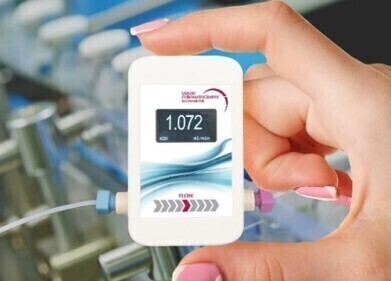HPLC, UHPLC
Is Chromatography the Key in Cracking Down on Cocaine?
Mar 08 2017
The last United Nations report on drugs — the 2015 World Drug Report issued by the United Nations Office on Drugs and Crime (UNODC) — showed that global drug use is still increasing despite the war-on-drugs. The UNODC estimate that 246 million people worldwide between the ages of 15 and 64 used illicit drugs — that’s 1 in every 20 people — an increase of 3 million people over the previous year.
The same factors that allow the global expansion of legitimate industries also allow the globalization of the drugs business. In a roundtable discussion on drug-related crime and money-laundering, the UNODC stated that: Advances in technology, transport and travel have added to the fluid efficiency and speed of the global economy. They also offer similar efficiencies to the business of trafficking networks.
A chemical fingerprint?
So, what can be done? A paper in the journal Drug Testing and Analysis — Applicability of ultra-high performance liquid chromatography-quadrupole-time of flight mass spectrometry for cocaine profiling — suggests one way that chromatography could help combat the supply of cocaine.
The team from the National Narcotics Laboratory in China sampled and tested over 180 samples of cocaine that were collected in China between 2011 and 2015. The aim of the study was to provide a chemical profile of the cocaine samples. But surely, cocaine is cocaine?
Adulterants and alkaloids
Typically, the cocaine bought on the street from dealers contains impurities and adulterants. Often these are alkaloids — nitrogen based compounds that come from plants — including morphine. Some of these impurities come from the coca leaf itself — the raw material for cocaine, traditional medicines in South America and for tea — whilst some impurities are from the process used to make cocaine from coca leaf.
By detecting and analysing the different impurities in each sample, a profile of the different cocaine batches on the streets could be made. There are several different techniques that can be used to analyse the alkaloids found in cocaine — including gas and liquid chromatography.
Chromatography makes a fingerprint
The team developed and used a method based on ultra high performance liquid chromatography linked to tandem mass spectrometry to separate and analyse the alkaloids in their cocaine samples. The use and advantages of UHPLC in separating samples is discussed in the article, Method Development for Reproducible Flash Purification of Pharmaceuticals by UHPLC and HPLC.
Using UHPLC allowed the team to detect alkaloids at very low levels with a high resolution — meaning that the cocaine profiles they created were very detailed. Altogether, the method allowed the team to profile the cocaine samples with 14 alkaloids — including six not previously identified. The team hope that their method — quicker and more selective than traditional GC-MS methods will aid the worldwide fight against illegal drugs.
Digital Edition
Chromatography Today - Buyers' Guide 2022
October 2023
In This Edition Modern & Practical Applications - Accelerating ADC Development with Mass Spectrometry - Implementing High-Resolution Ion Mobility into Peptide Mapping Workflows Chromatogr...
View all digital editions
Events
Jan 20 2025 Amsterdam, Netherlands
Feb 03 2025 Dubai, UAE
Feb 05 2025 Guangzhou, China
Mar 01 2025 Boston, MA, USA
Mar 04 2025 Berlin, Germany



.jpg)










